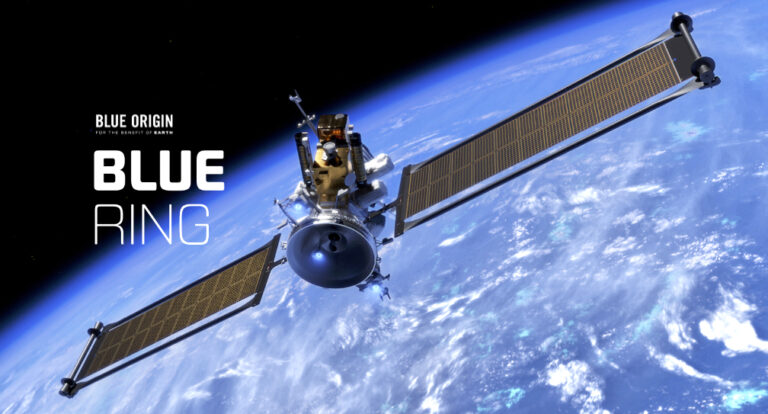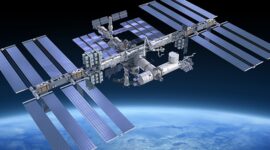July 26, 2025 – 10:00 AM EST
Blue Origin, the aerospace company founded by Jeff Bezos, has announced that its innovative Blue Ring spacecraft is scheduled for its first flight in spring 2026, marking a major expansion of the company’s capabilities beyond suborbital space tourism. This mission represents a strategic shift for Blue Origin as it moves into orbital logistics, deep-space exploration, and defense-related space operations. The Blue Ring platform is designed to be a highly adaptable orbital vehicle capable of supporting a wide range of missions, from satellite deployment and in-space servicing to long-duration scientific and military applications. With its modular architecture, the spacecraft can be configured for various payloads, making it an attractive option for both commercial clients and government agencies, including NASA and the U.S. Department of Defense.
The development of Blue Ring underscores Blue Origin’s ambition to compete in the growing orbital services market, where companies like SpaceX, Northrop Grumman, and other aerospace firms are already active. Unlike Blue Origin’s earlier projects, such as the New Shepard suborbital rocket and the upcoming New Glenn heavy-lift launch vehicle, Blue Ring is specifically engineered for sustained operations in space. Its key features include a robust payload capacity, allowing it to carry multiple satellites or scientific instruments simultaneously, as well as advanced propulsion systems that enable extended mission durations—potentially lasting years. This makes it ideal for missions requiring long-term presence in orbit, such as space station resupply, satellite maintenance, or even cislunar infrastructure support for NASA’s Artemis program.
One of the most significant aspects of Blue Ring is its potential role in in-space servicing and refueling, a capability that could revolutionize satellite operations by extending the lifespan of existing spacecraft and reducing orbital debris. The platform’s ability to dock with other vehicles, perform repairs, and adjust orbits positions it as a critical asset for both commercial satellite operators and military strategists. The U.S. Space Force and allied nations have already shown interest in Blue Ring for secure communications, reconnaissance, and rapid-response space deployments, highlighting its dual-use potential in both civilian and defense sectors.
The choice of spring 2026 for the inaugural flight allows Blue Origin sufficient time to complete rigorous testing and ensure mission readiness. While the company has not yet confirmed which rocket will launch Blue Ring, industry analysts speculate that the New Glenn—Blue Origin’s heavy-lift vehicle—is the most likely candidate, though partnerships with other launch providers remain a possibility. A successful debut would solidify Blue Origin’s position as a major player in the space industry, opening doors for future contracts with space agencies, private companies, and defense organizations.
Looking ahead, Blue Origin envisions Blue Ring as a foundational element of a broader space infrastructure ecosystem. Beyond near-Earth missions, the company is exploring applications in deep-space logistics, including support for future Mars expeditions and lunar base operations. If the 2026 launch proves successful, Blue Origin plans to scale production and offer the spacecraft as a multi-purpose orbital vehicle, potentially transforming how satellites are deployed, maintained, and utilized in space. With this ambitious project, Blue Origin is not just entering a competitive market—it is shaping the future of space logistics and exploration.




